The Sinister Side of Social Media Infiltration
The digital age has ushered in an era where social media platforms dominate our lives, shaping how we communicate, share, and consume information. Yet, beneath the shiny surface of likes and shares lies a darker reality—a world where infiltration and manipulation run rampant. Have you ever stopped to think about how much of your personal information is floating around in the digital ether? Or how your opinions might be swayed by unseen forces? This article dives deep into the sinister aspects of social media infiltration, exploring its impact on privacy, security, and society at large.
As we navigate through this digital landscape, it’s essential to understand that social media is not just a tool for connection; it’s also a battleground for influence and control. From political campaigns to corporate marketing strategies, the tactics used to manipulate users are becoming increasingly sophisticated. Imagine walking through a maze where every turn is designed to lead you to a predetermined outcome—this is the reality for many users who are unaware of the psychological tricks being employed to shape their thoughts and behaviors.
Moreover, the implications of social media infiltration extend far beyond individual users. They ripple through our communities, affecting public opinion and even the very fabric of democracy. When trust in information sources erodes, society faces a crisis of credibility. How can we make informed decisions when the truth is constantly obscured by a fog of misinformation and manipulation? It’s a question that looms large as we explore the depths of this issue.
In the following sections, we will unravel the complexities of social media manipulation, examine the chilling reality of privacy violations and data harvesting, and discuss the repercussions on mental health and societal trust. Together, we will confront the uncomfortable truths about the platforms we often take for granted. Are you ready to uncover the hidden dangers lurking behind your favorite apps? Let’s dive in!
Social media manipulation has become increasingly prevalent, affecting public opinion and political landscapes. This section discusses the tactics used to manipulate users and the implications for democracy and trust.
With the collection of personal data at an all-time high, privacy violations are rampant. This section highlights how social media platforms exploit user information and the consequences for individual privacy rights.
Examining notable case studies reveals the extent of data breaches on social media. This subsection analyzes specific incidents, their impact, and lessons learned about data security.
The Cambridge Analytica scandal is a prime example of data misuse. This segment outlines how personal data was exploited for political advertising, raising concerns about ethical practices in data handling.
Recent data breaches in 2023 have highlighted ongoing vulnerabilities. This part discusses significant breaches and their implications for social media users and companies alike.
The infiltration of social media can have detrimental effects on mental health. This subsection explores how constant exposure to curated content can lead to anxiety, depression, and other mental health issues.
The spread of fake news and misinformation on social media poses a significant threat to informed decision-making. This section investigates how misinformation campaigns operate and their societal consequences.
Recognizing misinformation is crucial for social media users. This subsection provides tips on how to identify false claims and avoid falling victim to misleading information.
Algorithms play a significant role in the dissemination of information. This part examines how social media algorithms can amplify fake news, creating echo chambers and polarizing opinions.
Q: What is social media infiltration?
A: Social media infiltration refers to the manipulation and exploitation of users' data and behaviors on social media platforms for various purposes, including political influence and marketing.
Q: How does social media manipulation affect democracy?
A: It undermines trust in information sources, leading to misinformation and polarizing public opinion, which can distort democratic processes.
Q: What can I do to protect my privacy on social media?
A: Be cautious about the information you share, review privacy settings regularly, and stay informed about data breaches and privacy policies.
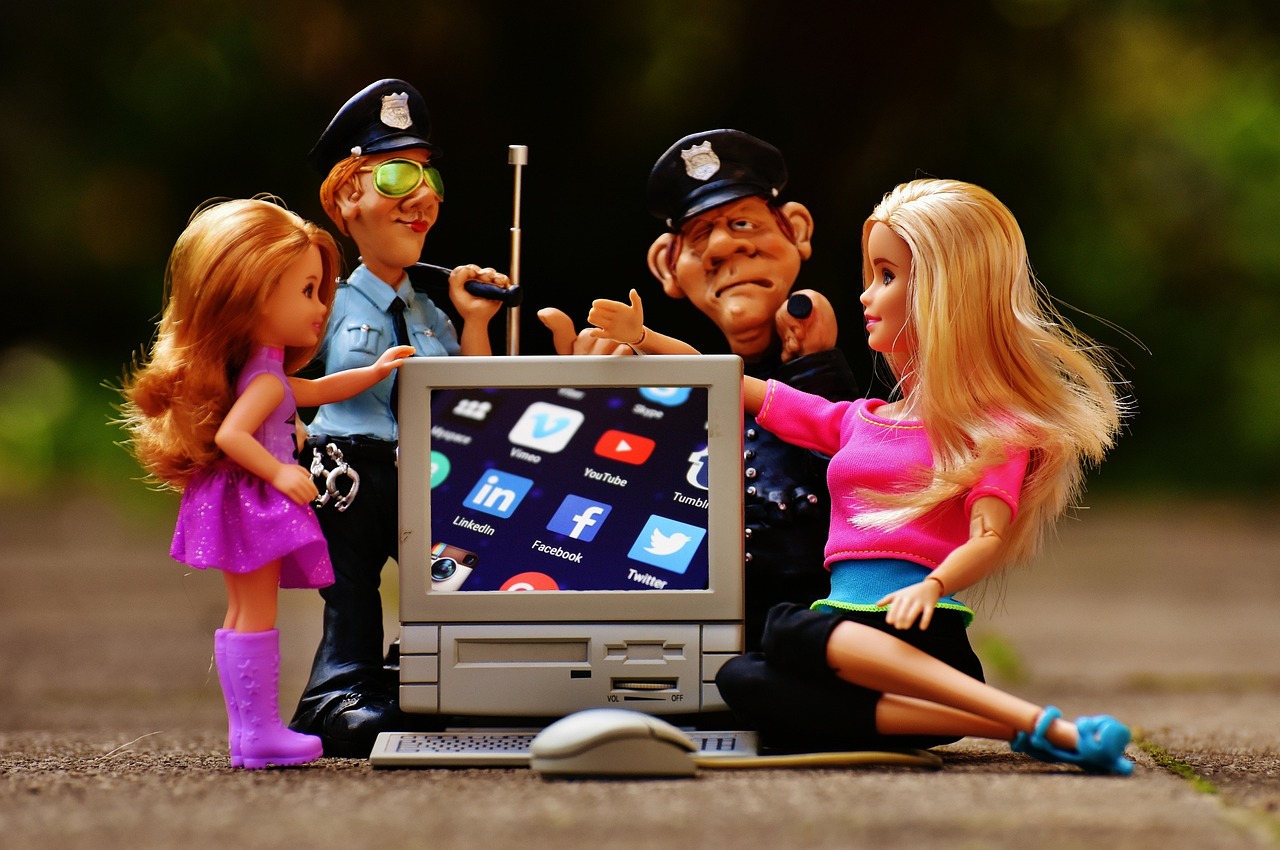
The Rise of Social Media Manipulation
In today's digital age, social media manipulation has become a **powerful tool** that can sway public opinion and alter political landscapes. With billions of users globally, platforms like Facebook, Twitter, and Instagram are not just social networks; they have morphed into arenas where information is weaponized. But how does this manipulation occur, and what does it mean for our democracy and trust in information?
One of the most alarming aspects of social media manipulation is the **strategic use of misinformation**. This involves crafting false narratives that can easily spread through the interconnected web of social media. Imagine a game of telephone, where a simple message transforms into a wildly distorted version by the time it reaches the last person. The implications are staggering—once misinformation takes root, it can significantly influence public perception and behavior.
Moreover, the tactics employed by those who manipulate social media are often sophisticated and insidious. They utilize **targeted advertising**, leveraging user data to deliver specific messages to particular demographics. This means that a political ad designed to sway one group might not even reach another, creating a tailored reality for users. As a result, individuals may find themselves in echo chambers, where their beliefs are reinforced rather than challenged.
Consider the following tactics commonly used in social media manipulation:
- Astroturfing: This involves creating fake grassroots movements to give the illusion of widespread support for an idea or product.
- Bot Accounts: Automated accounts can flood platforms with messages, making a particular viewpoint seem more popular than it truly is.
- Deepfakes: Advanced technology allows for the creation of realistic but fake videos that can mislead viewers and distort reality.
The effects of these manipulative strategies can be devastating. They not only undermine public trust in media and institutions but also create division among communities. When people are bombarded with conflicting information, it can lead to confusion and apathy, making it difficult for them to discern fact from fiction. This erosion of trust can have long-lasting consequences, especially when it comes to critical issues like elections or public health.
As we navigate this complex landscape, it's essential to foster a culture of **critical thinking** among social media users. We must question the sources of our information and the motives behind it. Are we being fed a narrative that serves someone else's agenda? By encouraging open discussions and promoting media literacy, we can empower individuals to become more discerning consumers of information.
In conclusion, the rise of social media manipulation is a pressing issue that requires our attention. It challenges the very foundation of our democratic processes and our ability to trust the information we receive. As we continue to engage with social media, let’s remain vigilant and proactive in safeguarding our collective understanding of the truth.
- What is social media manipulation? Social media manipulation refers to the strategic use of misinformation and tactics to influence public opinion and behavior on social media platforms.
- How can I identify manipulated content? Look for credible sources, check for corroborating information, and be cautious of sensational headlines or content that evokes strong emotions.
- What can I do to combat misinformation? Share verified information, engage in discussions that promote critical thinking, and report misleading content on social media platforms.

Privacy Violations and Data Harvesting
In our hyper-connected world, the **value of personal data** has skyrocketed, and social media platforms are at the forefront of this phenomenon. Every time you scroll through your feed, like a post, or share a meme, you're not just engaging with content; you're also feeding a vast machine that thrives on your personal information. It's like giving away pieces of your identity without even realizing it! This data is harvested, analyzed, and often sold to the highest bidder, leading to a plethora of **privacy violations** that many users are blissfully unaware of.
So, how exactly do these platforms exploit our information? Well, it starts with the **terms and conditions** that most of us click through without a second thought. When you sign up for a social media account, you’re agreeing to a mountain of legal jargon that allows companies to collect everything from your location to your browsing habits. It's akin to inviting someone into your home and then being shocked when they start rummaging through your personal belongings!
Moreover, the implications of these practices extend far beyond individual privacy rights. When personal data is mishandled, it can lead to **identity theft**, financial fraud, and even **emotional distress**. For instance, imagine receiving targeted ads that prey on your insecurities or past traumas. It's not just invasive; it's downright harmful. The psychological toll of constant surveillance can lead to feelings of anxiety and paranoia, making you question who truly has access to your life.
To illustrate just how pervasive these issues are, let's take a look at some alarming statistics regarding data harvesting:
| Statistic | Percentage |
|---|---|
| Users concerned about privacy | 79% |
| Users who read privacy policies | 9% |
| Social media accounts hacked annually | 30 million |
This table highlights a shocking reality: while a vast majority of users express concern over their privacy, very few take the time to understand what they're agreeing to. This disconnect is a breeding ground for exploitation. Social media companies often argue that they need this data to improve user experience, but at what cost?
Furthermore, the concept of **data harvesting** isn't limited to just social media giants. Many third-party applications and websites also collect user data, often without explicit consent. This creates a web of interconnected data points that can be used for various purposes, including targeted advertising and political campaigning. The **Cambridge Analytica scandal** is a prime example of how data harvesting can cross ethical lines, manipulating user information for political gain.
As we navigate this digital landscape, it’s crucial to be aware of the **privacy settings** available on social media platforms. Users often have the ability to limit data sharing, but many don’t take advantage of these options. By adjusting your privacy settings, you can regain some control over your personal information. It’s like locking the doors to your house; you wouldn’t leave them wide open for anyone to walk in, would you?
In conclusion, the issue of privacy violations and data harvesting is a complex and pressing concern that affects us all. It's essential to stay informed and vigilant about how our data is being used and to advocate for greater transparency and ethical practices in the tech industry. After all, your data is your identity, and it deserves to be protected!
- What is data harvesting? Data harvesting refers to the process of collecting and analyzing large amounts of user data for various purposes, often without explicit consent.
- How can I protect my privacy on social media? You can protect your privacy by adjusting your privacy settings, being cautious about the information you share, and regularly reviewing the apps connected to your social media accounts.
- What should I do if my data has been compromised? If you suspect your data has been compromised, immediately change your passwords, enable two-factor authentication, and monitor your accounts for any suspicious activity.
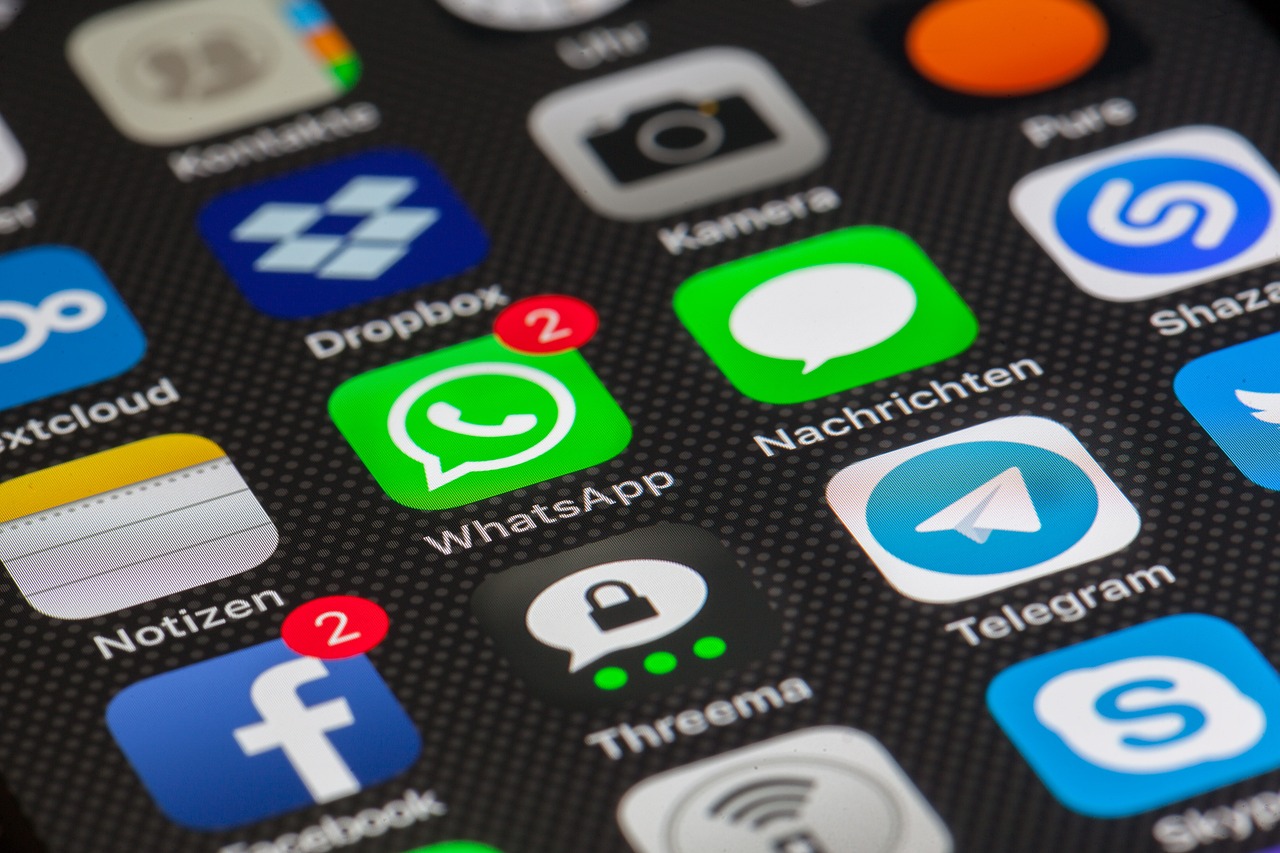
Case Studies of Data Breaches
In recent years, the digital landscape has been marred by shocking cases of data breaches that have left users feeling vulnerable and exposed. These incidents not only highlight the weaknesses in security protocols but also underscore the urgent need for robust data protection measures. Let's delve into some of the most notorious breaches that have rocked the social media world, revealing the extent of data misuse and the lessons we can learn from them.
One of the most infamous cases is the Cambridge Analytica scandal, which came to light in 2018. This incident involved the unauthorized harvesting of personal data from millions of Facebook users without their consent. The data was then used to influence voter behavior during the 2016 U.S. presidential election. The breach not only raised ethical concerns about how data is handled but also ignited a global conversation about privacy rights and the responsibilities of social media platforms. The fallout from this scandal was immense, leading to increased scrutiny and regulatory actions against Facebook and similar companies.
Another significant breach occurred in 2023, where a popular social media platform experienced a massive data leak affecting over 100 million users. Sensitive information, including email addresses, phone numbers, and even private messages, was exposed online. This incident served as a wake-up call, emphasizing the need for stronger security measures and better user awareness regarding data privacy. The aftermath of this breach saw a surge in user distrust, prompting many to reconsider their online presence and the information they share.
To further illustrate the impact of these breaches, here’s a table summarizing key details from notable data breaches in recent years:
| Year | Company | Number of Affected Users | Type of Data Exposed | Consequences |
|---|---|---|---|---|
| 2018 | Facebook (Cambridge Analytica) | 87 million | Personal data, political preferences | Regulatory scrutiny, loss of user trust |
| 2023 | Popular Social Media Platform | 100 million | Email addresses, phone numbers, private messages | Increased user concerns about privacy |
These case studies serve as stark reminders of the vulnerabilities inherent in social media platforms. As users, we must remain vigilant and proactive in protecting our personal information. Understanding the potential risks and the implications of data breaches is crucial. It’s not just about having a strong password; it’s about being aware of what we share and with whom. In a world where data is currency, safeguarding our digital selves has never been more vital.
- What is a data breach? A data breach occurs when unauthorized individuals gain access to sensitive information, typically due to inadequate security measures.
- How can I protect myself from data breaches? Use strong, unique passwords, enable two-factor authentication, and be cautious about the information you share online.
- What should I do if my data is compromised? If you suspect a breach, change your passwords immediately, monitor your accounts for suspicious activity, and consider contacting the platform involved.
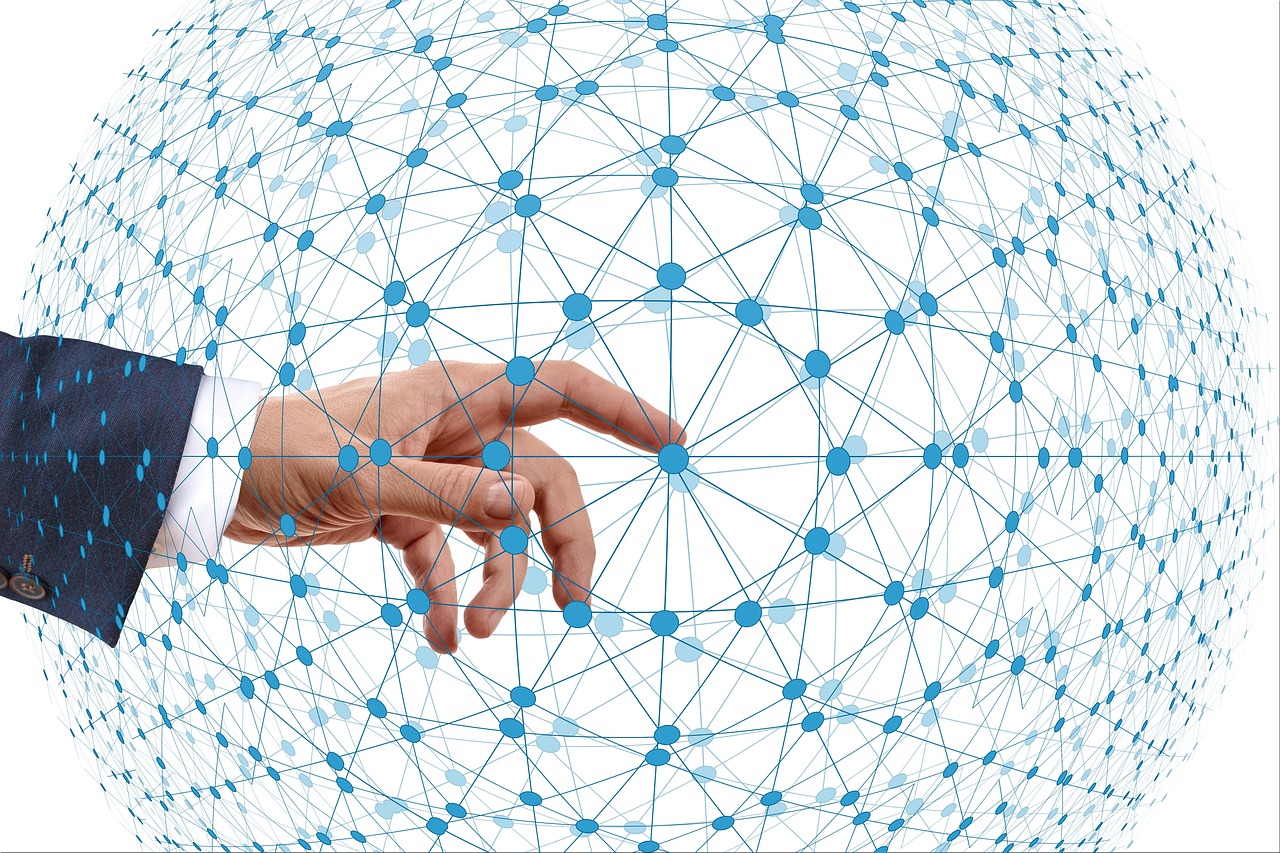
The Cambridge Analytica Scandal
The Cambridge Analytica scandal stands as a chilling reminder of how deeply personal data can be misused in the digital age. In 2018, revelations emerged that this political consulting firm had harvested the personal data of millions of Facebook users without their consent. This was not just a minor breach; it was a monumental violation of trust that sent shockwaves through the world of social media and beyond. Imagine waking up one day to find out that your private information has been weaponized against you in a political campaign—you’d feel betrayed, right? That's exactly how many users felt.
At the heart of this scandal was the exploitation of a seemingly innocuous personality quiz that was used to gather data. Over 270,000 people took the quiz, but what they didn't realize was that their participation allowed Cambridge Analytica to access the data of their friends—up to 87 million users in total. This massive data collection was then employed to create detailed psychological profiles, which were used to target individuals with tailored political advertisements. The implications for democracy and personal privacy were staggering. It raised a critical question: how much do we really know about who is watching us and how our data is being used?
In the aftermath, Facebook faced intense scrutiny and backlash, leading to a series of congressional hearings and a public outcry for stricter regulations on data privacy. People began to realize that the platforms they trusted with their personal information were not as secure as they had assumed. The scandal not only highlighted the vulnerabilities in social media platforms but also exposed the ethical dilemmas surrounding data usage. Are companies prioritizing profit over the privacy of their users? The answer seems to be a resounding yes.
Moreover, the Cambridge Analytica scandal opened the floodgates for discussions about the need for transparency and accountability in data handling. Governments around the world began to reconsider their regulations on data privacy, leading to significant legislative changes. For instance, the European Union implemented the General Data Protection Regulation (GDPR), which aims to give individuals more control over their personal data. This scandal has undoubtedly been a catalyst for change, but it also serves as a stark reminder that the battle for data privacy is far from over.
In summary, the Cambridge Analytica scandal is a pivotal moment in the history of social media, illustrating the dark side of data harvesting and manipulation. It serves as a cautionary tale for users everywhere, reminding us to be vigilant about what we share online and to demand greater accountability from the platforms we use. After all, in a world where our data is currency, we must ask ourselves: are we willing to pay the price?
- What was the Cambridge Analytica scandal?
It involved the unauthorized harvesting of personal data from Facebook users to influence political campaigns. - How many users were affected?
Approximately 87 million Facebook users had their data accessed without consent. - What were the consequences for Facebook?
Facebook faced significant backlash, including congressional hearings and calls for stricter data privacy regulations. - What changes did the scandal bring about?
It led to increased awareness of data privacy issues and the implementation of regulations like GDPR in the EU.

Recent Data Breaches in 2023
As we dive deeper into 2023, the alarming trend of data breaches continues to rear its ugly head, reminding us just how vulnerable our personal information can be. In the digital age, where our lives are intricately woven into the fabric of social media, the stakes are higher than ever. Recent incidents have not only compromised individual privacy but have also raised serious questions about the integrity of the platforms we trust.
One of the most shocking breaches occurred in early 2023, affecting a popular social media platform that boasted millions of active users. Hackers managed to infiltrate the system, resulting in the exposure of sensitive data, including names, email addresses, and even encrypted passwords. The implications of such a breach are profound, as it puts users at risk of identity theft and phishing attacks. The aftermath of this incident left many users feeling betrayed, questioning whether their personal information was ever truly secure.
Another notable breach involved a lesser-known but rapidly growing social media app. This platform, which had gained traction among younger audiences, experienced a significant data leak that revealed users' private messages and location data. The fallout was swift; users flocked to social media to express their outrage, and privacy advocates raised alarms about the app's lack of robust security measures. This incident serves as a stark reminder that even smaller platforms are not immune to the dangers of cyberattacks.
To put these breaches into perspective, let’s take a look at the statistics surrounding data breaches in 2023:
| Platform | Type of Breach | Data Exposed | Date |
|---|---|---|---|
| Popular Social Media Platform | Hacker Infiltration | Names, Emails, Encrypted Passwords | January 2023 |
| Emerging Social Media App | Data Leak | Private Messages, Location Data | March 2023 |
| Well-Known Messaging Service | Server Breach | User Profiles, Chat History | April 2023 |
These breaches not only highlight the vulnerabilities inherent in social media platforms but also underscore the urgent need for stronger security protocols. Users must remain vigilant and proactive about their online presence. Here are a few tips to safeguard your personal information:
- Use Strong Passwords: Opt for complex passwords and change them regularly.
- Enable Two-Factor Authentication: This adds an extra layer of security to your accounts.
- Be Wary of Phishing Attempts: Always verify the source of emails or messages before clicking on links.
In conclusion, the recent data breaches of 2023 serve as a wake-up call for both users and social media companies. As we continue to share our lives online, it is imperative to remain aware of the potential risks and take steps to protect our personal information. The digital landscape is ever-evolving, and so too must our strategies for safeguarding our privacy.
Q: What should I do if my data has been compromised?
A: If you suspect that your data has been compromised, immediately change your passwords, enable two-factor authentication, and monitor your accounts for any suspicious activity.
Q: How can I protect my privacy on social media?
A: To protect your privacy, review your privacy settings, limit the amount of personal information you share, and be cautious about friend requests from unknown individuals.
Q: Are smaller social media platforms safer?
A: Not necessarily. While smaller platforms may have fewer users, they can still be vulnerable to breaches. Always research a platform's security measures before joining.

Impacts on Mental Health
In today's hyper-connected world, the infiltration of social media into our daily lives has brought about significant changes, particularly in the realm of mental health. It's like being on a roller coaster that never stops; the highs can be exhilarating, but the lows can be devastating. The constant barrage of curated images, status updates, and notifications can lead to a plethora of mental health issues, including anxiety, depression, and feelings of inadequacy.
Imagine scrolling through your feed and seeing friends living their "best life" while you're sitting at home in your pajamas. This can create a toxic cycle of comparison, where you start to measure your worth against the highlight reels of others. Studies have shown that excessive social media use can exacerbate feelings of loneliness and isolation, even as it connects us to others. The irony is palpable; we are more connected than ever, yet many feel more alone.
Moreover, the incessant need for validation through likes and comments can lead to an unhealthy obsession with online approval. This quest for social validation can create a vicious cycle of anxiety, where users feel pressured to present a flawless image of themselves online. In fact, a recent survey indicated that over 60% of respondents reported feeling anxious when they did not receive immediate feedback on their posts. This anxiety can manifest physically, leading to issues such as sleep disturbances and increased heart rates.
In addition to anxiety and depression, social media can also contribute to the development of body image issues, particularly among younger users. The portrayal of unrealistic body standards and beauty ideals can lead to a distorted self-image. A significant number of young people report that social media influences their perceptions of beauty, often leading to unhealthy behaviors such as disordered eating or excessive exercise. In fact, research indicates that individuals who spend more time on social media are at a higher risk of developing body dissatisfaction.
But it's not all doom and gloom! There are ways to mitigate these negative impacts. Here are a few strategies:
- Limit Screen Time: Setting boundaries around social media use can help reduce anxiety and improve overall well-being.
- Curate Your Feed: Follow accounts that promote positivity and mental health awareness, and unfollow those that trigger negative feelings.
- Engage in Offline Activities: Spend more time engaging in hobbies, exercise, or face-to-face interactions that promote mental wellness.
As we navigate the complexities of social media, it’s essential to recognize its potential impact on our mental health. By fostering a balanced approach to social media use, we can enjoy the benefits of connectivity while minimizing the risks to our mental well-being. Remember, it's okay to take a step back and prioritize your mental health over your online presence.
- How does social media affect mental health?
Social media can lead to increased feelings of anxiety, depression, and loneliness due to constant comparison and the pursuit of validation. - What are some signs of social media addiction?
Signs include excessive time spent online, neglecting real-life relationships, and feeling anxious when not connected. - How can I improve my mental health while using social media?
Limit your screen time, curate your feed, and engage in offline activities to promote a healthier balance.

Fake News and Misinformation
The digital age has brought about an unprecedented flow of information, but along with it comes a dark cloud of . It's like walking through a foggy forest where every tree looks the same, but some are hiding dangerous creatures. Social media platforms, once hailed as democratizing forces, have become breeding grounds for deception. So, how does this happen? Well, misinformation campaigns are often meticulously crafted, targeting vulnerable populations with precision. They exploit emotional triggers, using sensational headlines and misleading images to capture attention and spread false narratives.
What’s particularly alarming is the speed at which misinformation spreads. A single tweet can travel around the globe in seconds, reaching millions before anyone has a chance to fact-check it. This rapid dissemination creates a perfect storm for public confusion and distrust. But the implications are far-reaching. Fake news can influence everything from personal beliefs to major political decisions, effectively steering the course of society. Imagine a ship lost at sea, guided by a faulty compass—that's what misinformation does to our collective understanding of reality.
In this chaotic landscape, it’s essential for users to become savvy consumers of information. But how can we discern truth from fiction? Here are some strategies to identify misinformation:
- Check the Source: Always verify the credibility of the source. Is it a reputable news outlet or a random blog?
- Cross-Reference: Look for other reliable sources reporting the same story. If it's only one outlet, proceed with caution.
- Read Beyond the Headline: Headlines can be misleading. Always read the full article to understand the context.
- Look for Evidence: Does the article provide data, quotes, or references to back up its claims?
Furthermore, social media algorithms exacerbate the issue. These algorithms are designed to keep users engaged, often prioritizing sensational content that elicits strong emotional reactions. This means that fake news can be amplified, creating echo chambers where users only see information that reinforces their existing beliefs. It's like being in a room filled with mirrors, where all you see is your own reflection, distorted and exaggerated.
As we navigate this murky territory, it's crucial to understand the societal consequences of misinformation. Trust in institutions, media, and even one another can erode, leading to a fractured society where dialogue is replaced by division. The very fabric of democracy is at stake when citizens are misled and manipulated. So, the next time you scroll through your feed, remember: not everything you read is true, and it's up to each of us to be vigilant in seeking the truth.
- What is fake news? Fake news refers to false or misleading information presented as news, often spread through social media.
- How can I spot misinformation? Check the source, cross-reference with other outlets, and look for evidence in the article.
- Why is misinformation a problem? It can influence public opinion, create division, and undermine trust in credible sources.
- What role do algorithms play? Algorithms can amplify sensational content, leading to the spread of misinformation and creating echo chambers.
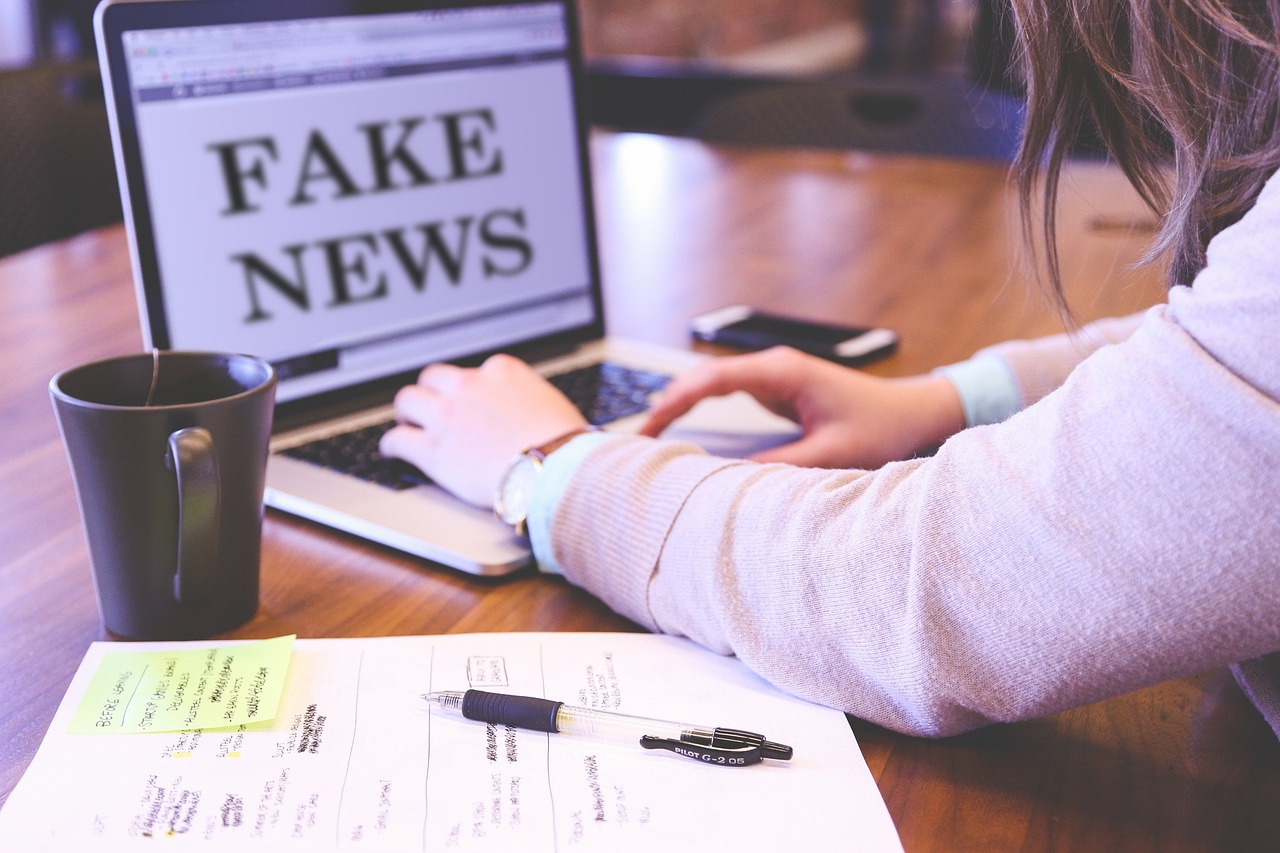
Identifying Misinformation
In today's digital age, where information flows faster than a river in flood, has become an essential skill for social media users. Have you ever stumbled upon a post that seemed too outrageous to be true? Well, you're not alone! With the rise of fake news and misleading content, it’s crucial to develop a keen eye for spotting the dubious claims that flood our feeds daily. So, how can we sift through the chaos and find the truth? Here are some tips that can help you navigate this treacherous terrain.
First off, always consider the source of the information. Is it a reputable news outlet or a random blog? Reliable sources usually have a track record of fact-checking and responsible journalism. If a post is shared from a site you’ve never heard of, take a moment to do a quick search. You might be surprised to find that the source has a history of spreading falsehoods. Remember, just because something is viral doesn’t mean it’s credible!
Next, pay attention to the language used in the post. Misinformation often employs sensationalist language designed to provoke an emotional response. Phrases like “you won’t believe what happened next” or “this shocking revelation will change everything” should raise red flags. Genuine news articles tend to maintain a more neutral tone, focusing on facts rather than emotion-laden rhetoric.
Another effective strategy is to cross-check facts. Use fact-checking websites like Snopes or FactCheck.org to verify claims before sharing them. These platforms are dedicated to debunking myths and verifying information, making them invaluable resources in the fight against misinformation. If you find that a claim has been debunked, you can avoid spreading the falsehood further.
Additionally, be wary of visual content. Images and videos can be manipulated to mislead viewers. Tools like reverse image search can help you determine the original context of an image. If an image is being used in a way that seems misleading, it’s worth investigating further. Remember, a picture may be worth a thousand words, but those words can easily be twisted.
Lastly, engage in critical thinking. Ask yourself questions like, “What is the purpose of this post?” or “Who benefits from spreading this information?” When you adopt a skeptical mindset, you become less susceptible to falling for misinformation. It’s like putting on a pair of glasses that help you see the world more clearly, filtering out the distortions that can lead you astray.
In summary, identifying misinformation requires vigilance and a proactive approach. By scrutinizing sources, analyzing language, cross-checking facts, examining visual content, and applying critical thinking, you can become a more informed social media user. In a world where misinformation can spread like wildfire, your ability to discern the truth can make all the difference. So, stay alert and keep questioning the information you encounter!
- What is misinformation? Misinformation refers to false or misleading information spread without malicious intent, while disinformation is intentionally deceptive.
- How can I verify the credibility of a source? Look for the source's reputation, check for author credentials, and see if the information is corroborated by other reliable outlets.
- What should I do if I encounter misinformation? Report it to the platform, inform your friends, and share accurate information to counter the false claims.
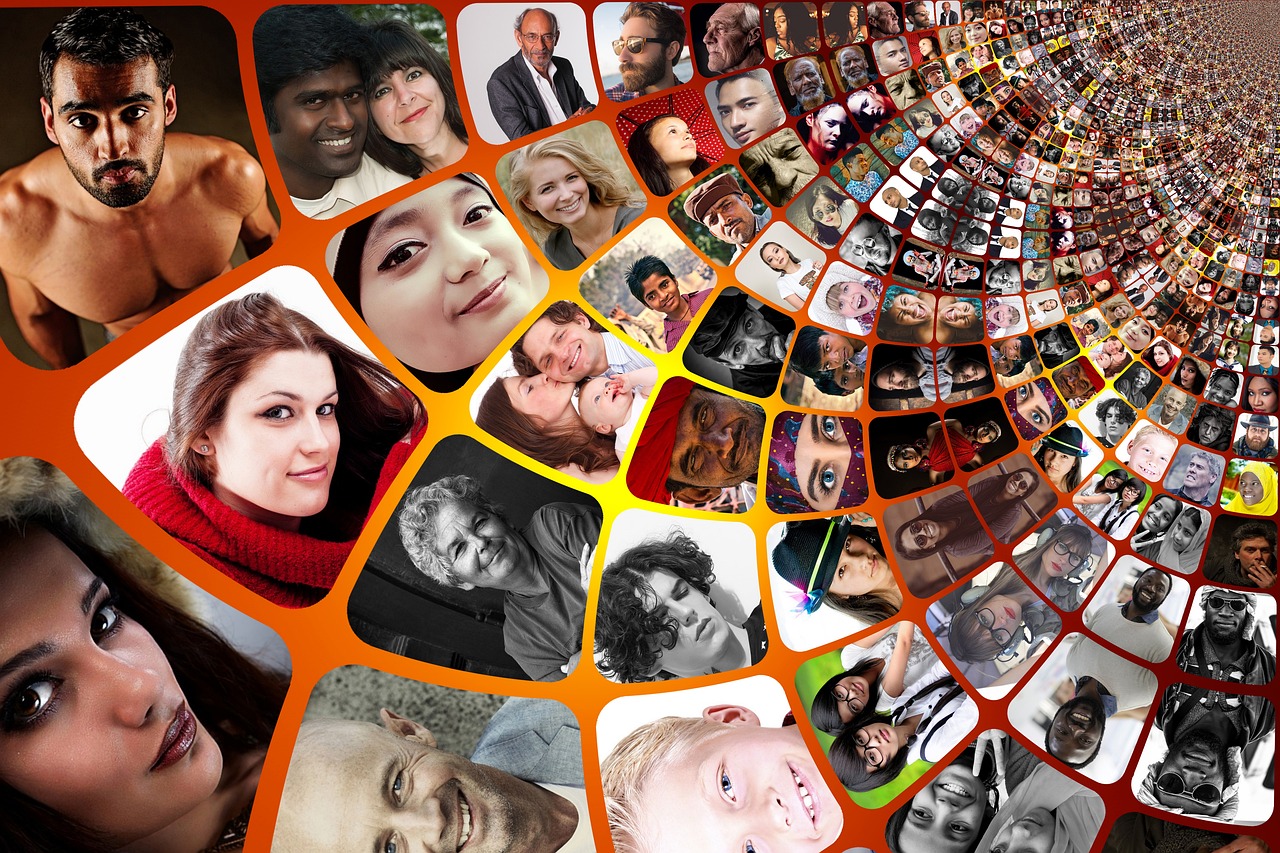
The Role of Algorithms
Algorithms are the unsung heroes—or perhaps the notorious villains—of the digital age. They dictate what we see, how we interact, and even how we think. Have you ever wondered why your social media feed seems to know you better than your best friend? It’s all thanks to these complex mathematical formulas that analyze your behavior, preferences, and interactions. But while they can enhance user experience by personalizing content, they also have a darker side that plays a significant role in the spread of fake news and misinformation.
At their core, algorithms are designed to maximize engagement. They do this by prioritizing content that keeps users clicking, sharing, and scrolling. This often means that sensational or polarizing content gets more visibility, creating a feedback loop that can distort our understanding of reality. Imagine walking into a crowded room where everyone is shouting about the latest scandal; it’s hard to ignore that noise, right? Similarly, algorithms amplify the loudest voices on social media, drowning out more moderate or factual perspectives.
One of the most concerning aspects of algorithmic influence is the creation of echo chambers. These are environments where users are exposed primarily to information that reinforces their existing beliefs. When algorithms curate our feeds based on our past interactions, they inadvertently isolate us from diverse viewpoints. This can lead to increased polarization, as people become more entrenched in their beliefs and less open to dialogue. It’s like being in a bubble where every sound reflects your own voice, making it nearly impossible to hear differing opinions.
Here’s a quick breakdown of how algorithms contribute to the spread of misinformation:
- Content Prioritization: Algorithms prioritize sensational content that generates high engagement, often at the expense of accuracy.
- Confirmation Bias: They reinforce existing beliefs by showing users content that aligns with their views, creating a skewed perception of reality.
- Rapid Spread: Misinformation can spread like wildfire because algorithms favor content that is trending, regardless of its truthfulness.
In recent years, tech giants have come under fire for their role in propagating misinformation. Companies like Facebook and Twitter have been criticized for not doing enough to combat the spread of false information on their platforms. They have implemented measures like fact-checking and content moderation, but the effectiveness of these strategies remains a hot topic of debate. The challenge lies in balancing user engagement with responsible content dissemination. After all, how do you ensure that the algorithms designed to connect us don’t end up tearing us apart?
As users, it’s crucial to be aware of the role algorithms play in shaping our online experiences. By understanding how they work, we can take steps to mitigate their negative impacts. For instance, diversifying the sources of information we consume can help break down echo chambers. Additionally, being critical of the content we encounter and verifying information before sharing it can contribute to a healthier online environment.
In conclusion, while algorithms have the potential to enhance our social media experience, they also come with significant responsibilities. The challenge is to harness their power for good, ensuring that they serve to inform rather than mislead. As we navigate this digital landscape, let’s remain vigilant and proactive, advocating for transparency and accountability in algorithmic design. After all, in a world increasingly driven by technology, it’s our responsibility to ensure that our voices are heard above the noise.
- What are algorithms in social media? Algorithms are sets of rules or calculations that determine what content is shown to users based on their behavior and preferences.
- How do algorithms contribute to misinformation? They prioritize engaging content, which can often be sensational or misleading, leading to the rapid spread of false information.
- What can I do to avoid misinformation on social media? Diversify your information sources, verify claims before sharing, and be critical of the content you consume.
Frequently Asked Questions
- What is social media infiltration?
Social media infiltration refers to the unauthorized access and manipulation of social media platforms and their users. It encompasses various tactics, including data harvesting, misinformation campaigns, and psychological manipulation aimed at influencing public opinion and behavior.
- How does social media manipulation affect democracy?
Social media manipulation can significantly impact democracy by shaping public opinion through targeted misinformation and biased content. This can lead to polarization, decreased trust in institutions, and the undermining of informed decision-making among voters.
- What are the privacy risks associated with social media?
Privacy risks on social media include unauthorized data collection, exposure of personal information, and potential misuse of that data by third parties. Users often unknowingly share sensitive information that can be exploited for various purposes, including targeted advertising and identity theft.
- Can you give examples of data breaches on social media?
Yes! Notable examples include the Cambridge Analytica scandal, where personal data was misused for political advertising, and various breaches in 2023 that exposed millions of users' personal information. These incidents highlight the ongoing vulnerabilities in data security on social media platforms.
- How does social media affect mental health?
Constant exposure to curated content on social media can lead to anxiety, depression, and feelings of inadequacy. The pressure to maintain a certain online image and the comparison with others can create a toxic environment for users, negatively impacting their mental well-being.
- What is fake news and how does it spread on social media?
Fake news refers to false or misleading information presented as news. It spreads on social media through shares, likes, and comments, often amplified by algorithms that prioritize engagement over accuracy, leading to the creation of echo chambers and widespread misinformation.
- How can I identify misinformation on social media?
To identify misinformation, check the source of the information, look for corroborating evidence from reputable outlets, and be wary of sensational headlines. Developing critical thinking skills and being aware of your biases can also help you navigate the social media landscape more effectively.
- What role do algorithms play in the spread of misinformation?
Algorithms on social media platforms can amplify misinformation by prioritizing content that generates high engagement, regardless of its truthfulness. This can create echo chambers where users are only exposed to information that aligns with their existing beliefs, further polarizing opinions.



















